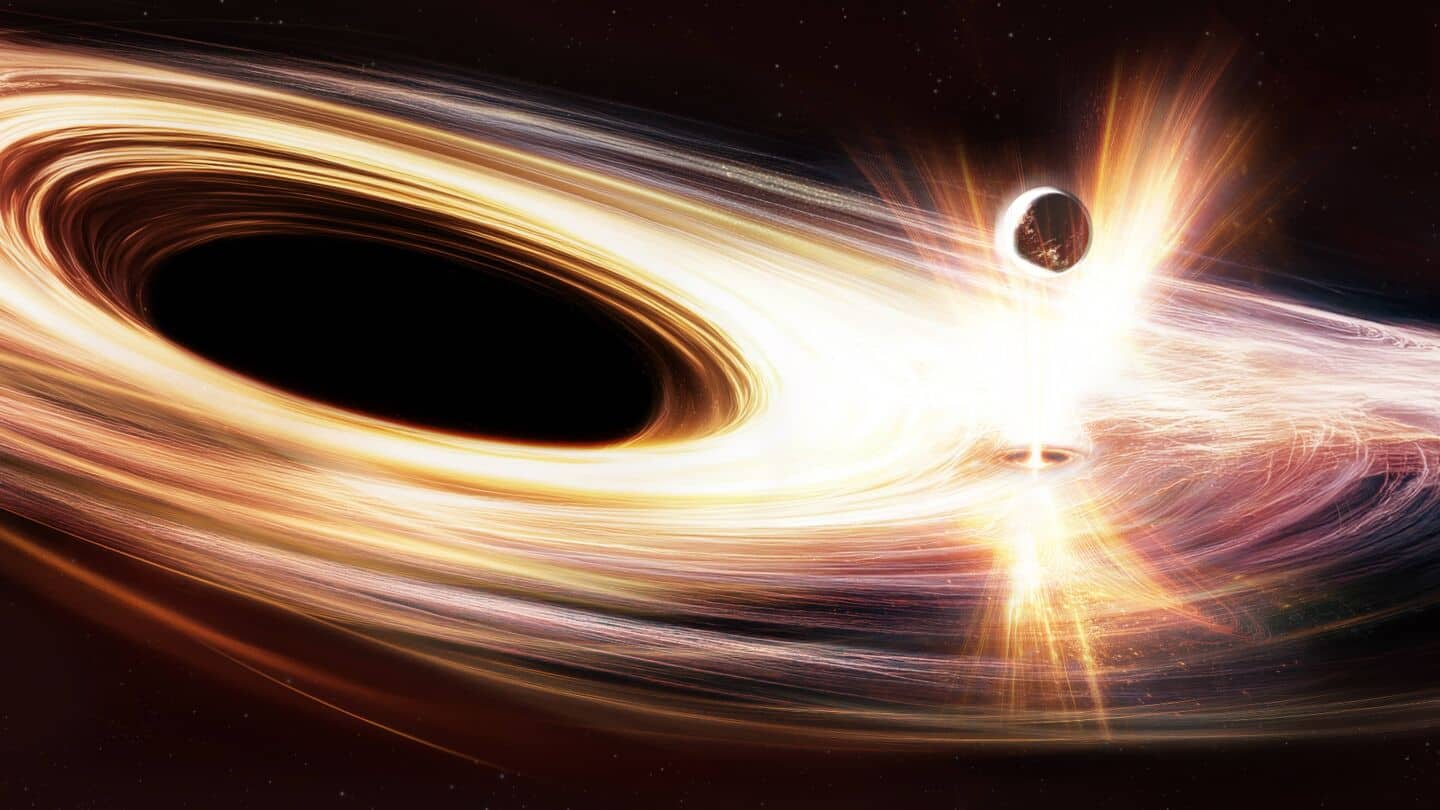
Watch: Supermassive black hole 'burping' after consuming too much matter
What's the story
Astronomers have discovered a supermassive black hole, PG1211+143, consuming matter at a rapid rate and later 'burping.' Located some 1.2 billion light-years away in a Seyfert galaxy, this black hole is around 40 million times more massive than our Sun. The discovery was made using the European Space Agency's X-ray observatory, XMM-Newton. The researchers found a massive influx of matter, equivalent to size of 10 Earths, toward PG1211+143 in just five weeks.
Matter influx
Influx of matter formed an accretion disk
This huge influx of matter formed an accretion disk around the black hole—a flattened cloud of gas and dust from which matter is consumed by the central entity. However, even this gargantuan black hole couldn't handle such a large amount of matter at once.
Indigestion symptoms
Outflows travel at nearly the speed of light
The excess matter led to high-speed outflows from PG1211+143, traveling at nearly a third of the speed of light. These outflows followed the black hole's matter intake by a few days, heating surrounding material to several million degrees. The radiation pressure generated, pushed this excess matter away from the central region of PG1211+143, creating a phenomenon described by astronomers as "burping."
Star formation
'Burp' could help scientists understand black holes
These high-speed outflows might be depriving PG1211+143's surrounding area of the building blocks for new stars. The intense heat from these outflows could be heating gas and dust, pushing that material away. This phenomenon might help scientists understand how black hole eruptions transform the galaxies from hubs of star birth to a more dormant existence.
Insights
Why the study is necessary
Ken Pounds, the team leader of the study from the University of Leicester, said that observing the connection between massive inflow and outflow is a major step in understanding black hole growth. He added that this could be done by regularly monitoring hot, relativistic winds linked to new matter accretion. The team's findings were published in the Monthly Notices of the Royal Astronomical Society (MNRAS).